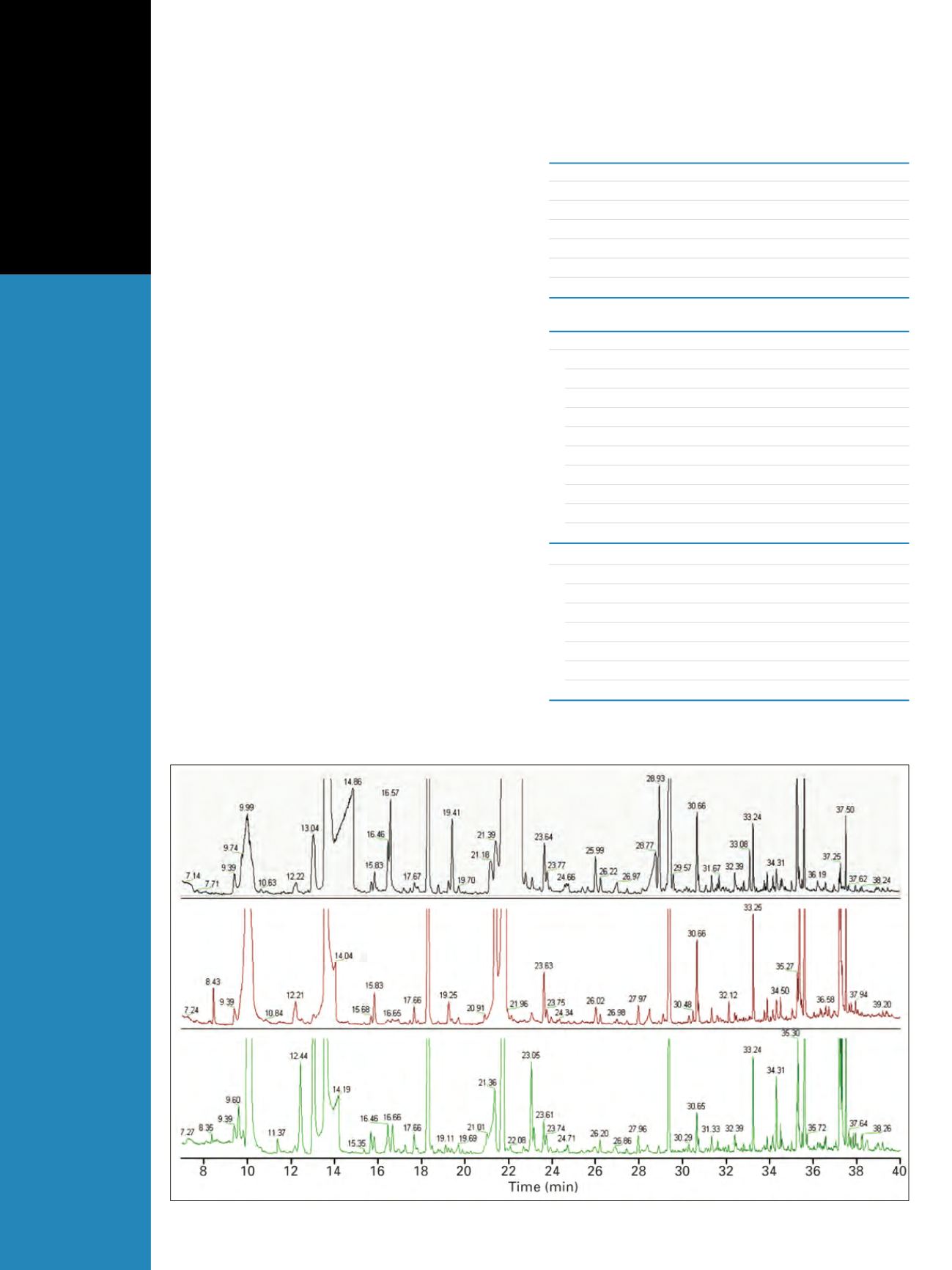
Sample Preparation
To prepare the samples, a 10 mL sample of wine was
saturated with NaCl. The sample was placed in a vial and
extracted using SPME. A PDMS/DVB 65 µm StableFlex
™
SPME Fiber (SUPELCO-57293U) was used, and the fiber
was exposed to the sample for agitation for 30 minutes at
70 °C at three-second intervals.
Instrumental Analysis
The ISQ mass spectrometer used for this analysis was set to
perform sequential full scan/SIM acquisitions. The TRACE
™
GC Ultra was equipped with a standard split/splitless injector.
The split/splitless injector temperature was set to 220 °C, and
a splitless injection was used. The ISQ GC-MS parameters
are summarized in Table 2. The analytical column used
was a Thermo Scientific TraceGOLD TG-5MS 15 m
×
0.25 mm i.d.
×
0.25 µm film (PN 26098-1300). TCA d5 was
used as an internal standard; its SIM ions are 215 and 217.
The results were analyzed using Thermo Scientific
QuanLab Forms software. QuanLab
™
Forms automatically
tests the expected retention times (RT), actual ratio versus
range of tolerance, and the coelution of ions. QuanLab Forms
is also Directorate-General for Health and Consumer
Protection (SANCO) compliant and can be used in
the European Union.
Results
The spectra of the sequential SIM scan can be seen in
Figure 2. The SIM ions monitored using the ISQ are listed
in Table 3. Figures 3 through 7 present the calibration curves
of several of the target molecules at various linearity ranges.
Calibration ranges were established according to the range
of human perception – and to the range of interest for
oenologists – as opposed to instrument performance.
For all these target molecules, the GC-MS was able to detect
lower concentrations than the limits of human perception.
Figure 2: Chromatograms showing full-scan acquisitions for three wine types
ISQ
Source Temp (°C)
200
Detector Gain
1
×
10
5
Start Time (min)
0.2
Acquisition End Time (min)
40
Full Scan Range (u)
35–450
Dwell Time (ms)
20
SIM Ions
See Table 3
TRACE GC Ultra
Oven Method
Initial Temp (°C)
40
Initial Time (min)
1.0
Rate #1 (°C/min)
5
Initial Temp #2 (°C)
60
Initial Time #2 (min)
1
Rate #2 (°C/min)
3
Initial Temp #3 (°C)
125
Hold Time #3 (min)
1
Rate #3 (°C/min)
10
Final Temp (°C)
238
SSL Method
Splitless
Temperature (°C)
220
Mode
Splitless
Splitless Time
3 min
Carrier Flow (mL/min)
1.2
Gas Saver
On
Vacuum Compensation
On
Transfer Line (°C)
250
Table 2: Instrument method summary for the full scan/SIM analysis of target
molecules on the ISQ and TRACE GC Ultra
White
Rosé 2010
Red 2007


